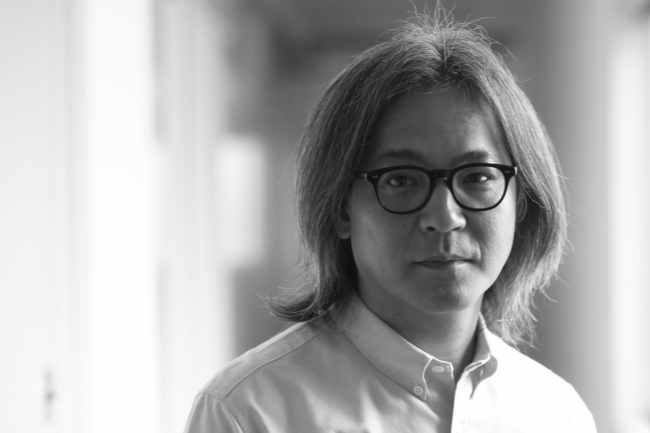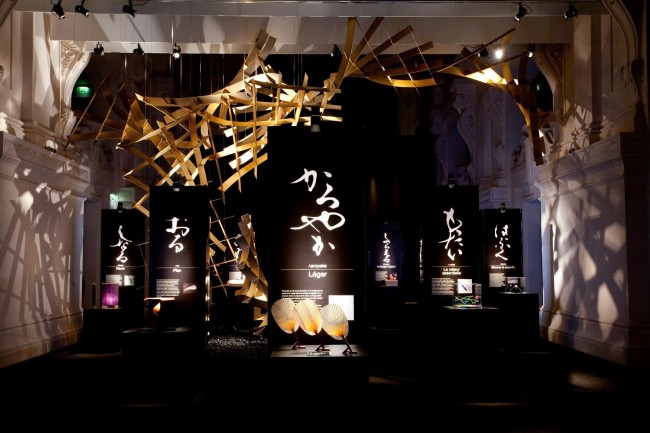[Herald Design Forum 2018] ‘Space Composer,’ Junji Tanigawa says design will continue to expand boundaries
By Shim Woo-hyunPublished : Sept. 11, 2018 - 18:18
Design will continue to expand its boundaries, says Junji Tanigawa, a Japanese designer known as “Space Composer.”
“There will probably be changes in the concept of design. It will expand into many fields and will all be considered as design. Newsfeeds and shared awareness will be structured at a level different from today’s,” Tanigawa said in an email interview with The Korea Herald and The Herald Business.
“There will probably be changes in the concept of design. It will expand into many fields and will all be considered as design. Newsfeeds and shared awareness will be structured at a level different from today’s,” Tanigawa said in an email interview with The Korea Herald and The Herald Business.

“I create many different types of communication platforms, utilizing space as a medium. I play the part of a conceptor, designer, creative director as well as coordinator,” Tanigawa said in introducing himself.
Tanigawa’s major works include the exhibition “Kansei” at the Palais du Louvre’s Museum of Decorative Arts in 2008, and “Yakushiji Hikari Emaki” in 2010, designed to commemorate the 1300th anniversary of the founding of Japan’s ancient capital of Nara.

“If I must categorize myself, I would be a designer. However, that would depend on the definition of design, and my output would certainly be different. In that sense, I am searching for a true means of communication that disregards the conventional,” Tanigawa said.
He elaborated on his ideas about design, particularly the design of space.
“‘Space Compose’ is a term coined to express one who composes space. I play the part of a concept or, designer, creative director as well as coordinator. There is a lot of information in a space, thus there are many different approaches,” he said.
“I feel the process of weighing each factor and calculating its balance to create a space is very much similar to that of a composer, whose role is assimilating the different tones of each musical instrument in an orchestra and creating what is beautiful to the ear. A project for me is not only about designing a physical space, but the process of gathering and editing the many factors within that space.”
Tanigawa currently leads JTQ, a Tokyo-based space creation consulting firm.
Asked about the difference between JTQ and other marketing firms, he replied, “I design the concept, I design the space and I design the experience for the people who visit the space. By combining these, we have been able to consistently create designs, which have reached out to the desired demographic of the owners. If experience is the primary factor, then physical design will follow. If it is impression, then experience will be designed accordingly.
“There is no definite priority in our creative approach. We simply but firmly stand with the ‘expectations,’ ‘impressions’ and ‘memories’ of the visitors. It is our unique approach to substantiate the will of the owners to achieve their goal.”
Tanigawa emphasized that a space contains the memories and emotions of people who gather there.
“A space is ‘a place.’ A place is made from the emotions of people who gather there. Those emotions are ‘expectations,’ ‘impressions’ and ‘memories.’ A space is where a lot of energy circulates and responds, and therefore is a place unbound to its physical form. The greatest creation of space as a medium is the impression of the one-and-only experience birthed at that time and moment.” Tanigawa said.
Past JTQ projects have included work for such clients as luxury vehicle company Lexus and beauty company Shiseido.
“Both Lexus and Shiseido have deeply cultivated corporate cultures and product policies. Each has a worldview that is unique and is not limited to what is simply visible. I am honored to have worked with them in many projects as a creator who is able to express their desired moods and atmospheres. I feel their unique qualities will continue to develop into the future as long as their sense of beauty and technology are able to merge together,” he said.
Tanigawa also talked about the standards he pursues when designing public places such as schools, hospitals, and libraries.
“I believe this era is serious about innovation, and that the evolution of AI (artificial intelligence) and technology will bring dramatic changes to the society. However, we humans are traveling souls using our bodies as vehicles. The mobility of will and knowledge is the source of evolution and change. This era is the time of diversity. New creations are born from meeting with people who are different from us, and accepting our differences.
“Meeting and learning about differences. Schools, hospitals and libraries are extremely important for this type of education. How is the environment? What is the situation and how is it being handled? What programs are being provided that allow people to discover new qualities about themselves? It is my belief that uniqueness of each space comes from the complex combination of these factors,” Tanigawa said.
He picked architect Kim Swoo-guen as one of the memorable figures from Korea.
“I remember visiting the Korean Pavilion, which Kim designed, at the Osaka Expo as a young child. I also remember him from his friendship with many famous Japanese designers,” Tanigawa said.
“I’m very much affiliated with Korean industrial design. I would say its strength is the ability to produce design that conforms to global standards; (Its) weakness would be that it falls short in terms of showcasing Korean uniqueness,” he said.
By Shim Woo-hyun (ws@heraldcorp.com)







![[Graphic News] More Koreans say they plan long-distance trips this year](http://res.heraldm.com/phpwas/restmb_idxmake.php?idx=644&simg=/content/image/2024/04/17/20240417050828_0.gif&u=)
![[KH Explains] Hyundai's full hybrid edge to pay off amid slow transition to pure EVs](http://res.heraldm.com/phpwas/restmb_idxmake.php?idx=644&simg=/content/image/2024/04/18/20240418050645_0.jpg&u=20240419100350)








![[KH Explains] Hyundai's full hybrid edge to pay off amid slow transition to pure EVs](http://res.heraldm.com/phpwas/restmb_idxmake.php?idx=652&simg=/content/image/2024/04/18/20240418050645_0.jpg&u=20240419100350)

![[Today’s K-pop] Illit drops debut single remix](http://res.heraldm.com/phpwas/restmb_idxmake.php?idx=642&simg=/content/image/2024/04/19/20240419050612_0.jpg&u=)